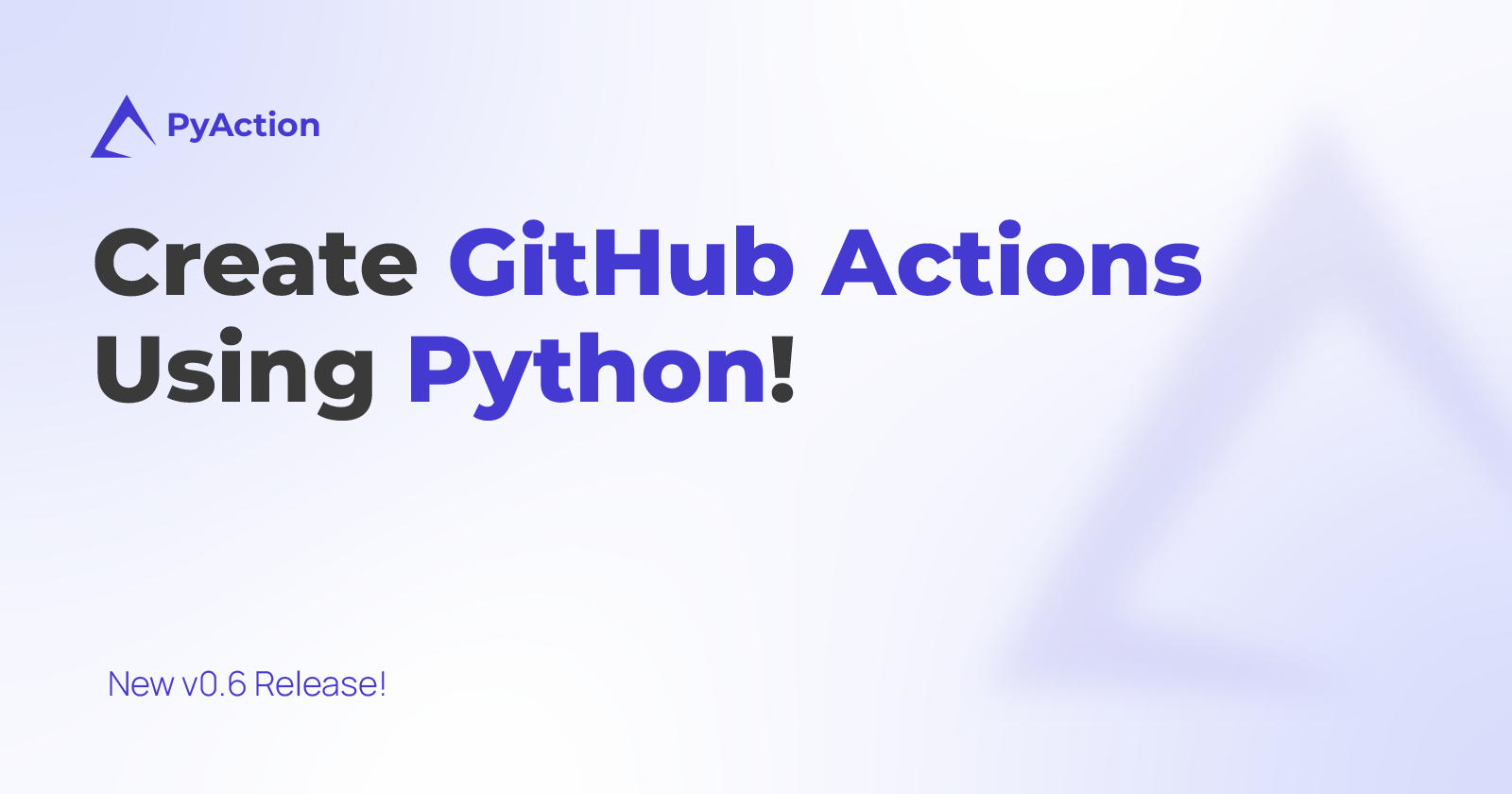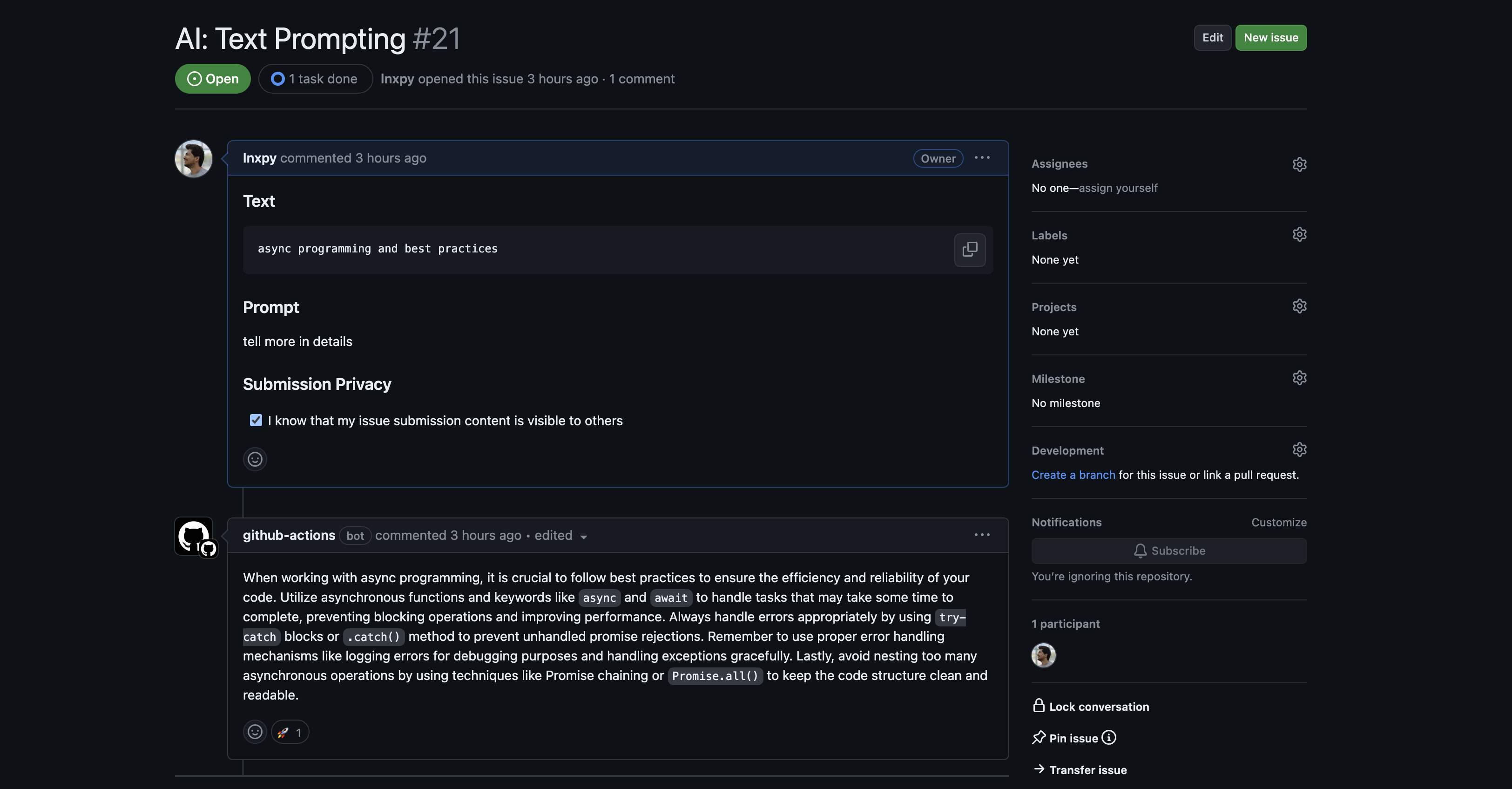PyAction - Create GitHub Actions Using Python!
 Sadra Yahyapour
Sadra Yahyapour
GitHub Actions was introduced in 2018. Since then, GitHub Marketplace has witnessed numerous brilliant ideas that have impacted the Continuous Integration and Delivery world.
As GitHub says..
Actions are individual tasks that you can combine to create jobs and customize your workflow. You can create your own actions, or use and customize actions shared by the GitHub community [aka Marketplace].
In this article, we will demonstrate a simple implementation using PyAction, a tool that allows you to create actions using Python. This way, you can take advantage of Python libraries and bring your ideas to pipelines!
Additionally, we will discuss the recent release of PyAction and the new features that have been introduced in version 0.6.x.
Actions in a Nutshell
In the following example, you see a simple pipeline in GitHub Actions that triggers on the push event and executes the bash script echo Hello world!. You can place any bash script there to run, including an API call using curl maybe!
name: CI Example
on:
push:
branches: [main]
jobs:
Builder:
runs-on: ubuntu-latest
steps:
- name: Greeting
run: echo Hello world!
We have a Builder job with just one step, which is executing a shell script. Actions are like functions. Considering the earlier example, what if you wanted to send an email instead of running a bash script?!
...
steps:
- name: Sending email
run: python send_email.py # hmm.. let's see.
Well, thanks to Dawid Dziurla, there is already an action designed for this purpose. You can modify your pipeline to use it in this manner.
...
steps:
- name: Send mail
uses: dawidd6/action-send-mail@v3
with:
subject: Github Actions job result
to: someone@somewhere.com
from: Sadra Yahyapour
body: CI workflow executed successfully!
As you can see, we are now using the dawidd6/action-send-mail release v3 action with certain input parameters (subject, to, from, and body).
The aim here is to introduce a solution for creating actions using Python and have the ability to call it with the desired input parameters.
Worth noting that the action-send-email is written in JavaScript and we're talking snakes here. 🐍
Creating an Action
Technically, GitHub offers three ways to develop custom actions.
JavaScript actions
Docker container actions
Composite actions
Let's focus on the Docker container and Composite options. Composite actions are actions created using only bash scripts. Essentially, you have the freedom to perform various tasks within a Composite action. You can compile and execute C programs, install tools based on the optionally-limited runs-on image, make API calls, and more. In essence, Composite actions offer flexibility.
On the other hand, Docker container actions are restricted to the base image specified in the Dockerfile. You can then add additional layers. PyAction follows the Docker container approach and runs your action within a python:3-slim environment. This is what PyAction uses to run your Python actions.
Using PyAction
PyAction is delivered as a third-party package needed for your action to function. Despite this, it is very stable in the local environment for testing. Therefore, you can use it on your local machine easily and even test your action before deploying it.
Installation
Make sure you have pip and python>=3.8 available on your machine and run the following command to install pyaction.
pip install -U "pyaction[cli]"
Creating a base template
It is highly recommended to use the init command to generate a base template for your action. You can then build your action on top of this structure by answering some questions.
pyaction init
| Question | Description | Example |
| Action name | Action name | SMS Action |
| Action's slug | Slugged version of the Action name (better left with the default value) | sms-action |
| Short description | Short description about the action | Sending SMS Messages |
| Author's name | Author's name | John Doe |
| Include workflow testing pipeline | Creates a .github/workflows/test.yml for self-testing the action | y |
This prompting would give us the following action tree.
sms-action/
├── Dockerfile
├── README.md
├── action.yml
├── main.py
└── requirements.txt
1 directory, 5 files
Hello world example
Let's take a look at a simple hello-world example created with PyAction. The goal is to set up an input parameter for users to send their names, and then we will greet them!
After you've initialized the template using the init command, it's time to define the input/output parameters. Open the action.yml file to declare them.
...
inputs:
name:
description: user's name
default: World
outputs:
phrase:
description: greeting message
Open the main.py file. And create the very basic greeting_action inside it.
from pyaction import PyAction
workflow = PyAction()
@workflow.action()
def greeting_action(name: str) -> None:
workflow.write(
{
"phrase": f"Hello {name}!"
}
)
As you can see, the greeting_action takes one parameter called name which is a string. It also writes to the workflow the variable phrase. We've defined them both in the action.yml file.
Testing
To test if the action works as expected, there is a run command that does the job for us. However, before we proceed with the execution, we need to simulate how action runners invoke the actions with the defined input parameters.
Create a .env file inside the action to simulate the input parameters of the action.
INPUT_NAME=Sadra
Now, by running the run command, you'll see the variables that the workflow.write() method writes to the workflow.
pyaction run
phrase=Hello Sadra!
The phrase variable is accessible in other steps of the user's workflow.
...
steps:
- name: Greeting action
id: greeting
uses: you/greeting-action@main
steps:
- name: Showing the message
run: echo ${{ steps.greeting.outputs.phrase }}
Publishing
To publish the action on the marketplace, you need to consider certain things during the development process. After developing your action, there are some post-development tasks to complete before delivering it to the GitHub Marketplace, such as tagging and releasing it. If you wish to proceed, refer to the publishing in the marketplace section in the documentation.
This hello-world action is also available on https://github.com/lnxpy/pyaction-hello-world. Feel free to check it out! ✨
New Features in v0.6
In the new v0.6 release, a few major features were announced.
Issue Form feature
As GitHub describes the issue forms..
You can define different input types, validations, default assignees, and default labels for your issue forms.
It's a reliable solution for controlling users' input when they open issues on your repositories. By using this feature in PyAction, you can allow users to interact with your actions through the issues tab by filling out the designed form.
For example, take a look at the following repository. It uses the Issue Form feature to serialize the details within the opened issue. It then utilizes this information to invoke MindsDB's mdb.ai service and obtain the output from ChatGPT. Lastly, it comments on the result.

Check out this page for more information about how this feature works.
Running additional bash scripts before invoking the action
If the action requires some additional system dependencies or you want to run some additional commands before the action starts running, you can put all the commands inside a script.sh file inside the action directory. It'll be executed even before your action's Pythonic dependencies installation.
Check out this page for more information.
Local testing
With the run command, test the action locally before publishing your action.
Composite Actions vs PyAction
PyAction uses the Docker container convention to create an isolated environment using DockerHub-hosted images. On the other hand, with a composite approach, you have to go through several steps to set up a Python-friendly environment before implementing your idea.
In a composite action, you often make many external API calls. In contrast, PyAction relies on internal API calls, which are quicker and more secure.
Ultimately, PyAction simplifies local action testing by simulating inputs and outputs.
Useful Links
PyAction Repository: https://github.com/lnxpy/pyaction
PyAction Docs: https://pyaction.imsadra.me
mdb.ai Action (that uses Issue Forms): https://github.com/lnxpy/mdb-ai-prompted-text
Conclusion
GitHub Actions is a platform commonly used for performing CI tasks on projects hosted on GitHub. I developed a tool called PyAction to allow users to create custom actions using Python. PyAction includes a range of features such as local testing.
Subscribe to my newsletter
Read articles from Sadra Yahyapour directly inside your inbox. Subscribe to the newsletter, and don't miss out.
Written by

Sadra Yahyapour
Sadra Yahyapour
A passionate software developer who enjoys sharing his thoughts with others and learning from them vise versa!